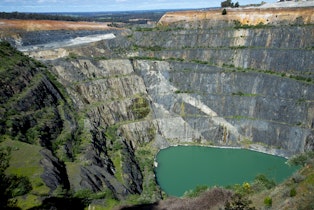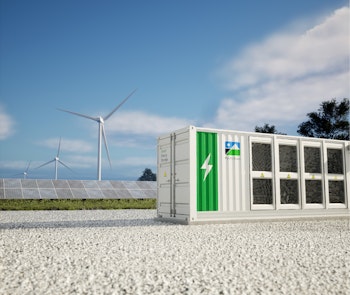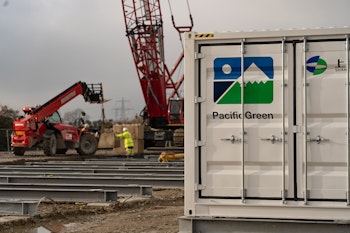For the Jim Collins fans out there, the following big hairy audacious goal will resonate with you. Australia can be a renewable energy superpower. But what’s a goal without a plan? Enter, the National Battery Strategy.
The Australian government is looking to make a major industrial bet on battery manufacturing with a consultation on a national strategy closing on March 17, 2023.
The National Battery Strategy aims to leverage Australia’s strengths in mining and mineral processing and capture part of a lithium-ion chemistry industry that is expected to grow up to 22 times, according to the government issues paper published in February 2023. It’s a welcome step as Australia transitions to a low-carbon energy system.

“Batteries will power electric vehicles, residential and community scale energy storage and grid energy storage for small and large systems,” says the paper. “Australia can capture increasing parts of these growing markets, building on our strengths in mining and a range of battery minerals.”
Although the strategy will cover multiple battery chemistries, there is little doubt that lithium-ion will be the focus of attention since it is vital to vehicle electrification and grid stability.
Figures from the analyst firm BloombergNEF show considerable scope for growth across the global lithium-ion value chain. By 2040, the International Energy Agency expects demand for lithium to grow more than 40 times current levels if the world is to meet its Paris Agreement goals.
Furthermore, says the issues paper, “Domestically, batteries will play a critical role in supporting Australia to achieve its net zero emissions targets. Batteries can deliver firming capacity to support an increasing share of renewable energy generation … to 82% by 2030 under the Powering Australia plan.”

Analysis carried out in 2021 showed that investment in Australia’s battery industries could create 34,700 jobs and add AUD$7.4 billion in gross value to the economy. The battery strategy foresees an industrial payback right across the country, with key state benefits including:
- Battery-grade chemical production in Western Australia, which was already the world’s largest producer of lithium in 2021, with an output of 55,000 tonnes worth $2.6 billion. The state’s Future Battery Industry Strategy aims to consolidate its presence in the global market by 2025.
- Materials mining, energy storage projects and research and manufacturing in New South Wales, which also has a $250 million renewable manufacturing fund and anticipates the need for large-scale battery projects in its Electricity Infrastructure Roadmap.
- Research and development in the Australian Capital Territory, under the Australian National University’s Battery Storage and Grid Integration Program. The Territory is already installing large-scale batteries to meet a goal of net zero emissions by 2045.
- Battery manufacturing within an energy and jobs plan in Queensland. The state is aiming for 70% of renewables in its energy mix by 2032 and has committed $500 million for grid and community batteries while developing a battery industry strategy.
- Copper and graphite resource extraction in South Australia, which is already putting $50 million into grid-scale storage to cope with a renewables-heavy grid that met 75% of electricity demand through clean power generation on average over the last three months.
- Exploitation of manganese and lithium deposits in Northern Territory. The state has the world’s largest high-grade manganese deposit and is also planning to establish a cathode material precursor manufacturing plant.
- Zero and low-emission technology manufacture in Victoria, which has recently released a 2030 manufacturing statement that lists batteries as a state priority. The state expects all its buses to be electric from 2025.
- Nickel and cobalt mining plus chemical processing in Tasmania. The state’s Barnes Hill mine alone could produce up to 500,000 tonnes of nickel and cobalt a year.
The publication of the issues paper comes amid a global scramble to develop battery manufacturing capacity. China currently dominates the industry, but significant investments are planned in Europe and North America.
The prospect of homegrown manufacturing is a welcome one for battery project developers such as Pacific Green since it will help reduce the likelihood of supply issues and price volatility, while creating local jobs.
At Pacific Green we have been able to avoid such challenges thanks to the strength of our global supply chains, but our Australian battery project developments supported by Australian battery manufacturing is a match made in heaven.
The country is already a world leader in the deployment of large-scale battery projects, such as the 300 MW Victorian Big Battery and the 150 MW Hornsdale Power Reserve. Demand for energy storage will only rise as Australia seeks to electrify its vehicle fleet and completely transition to a low-carbon energy system.

Finally, the development of battery manufacturing fits in well with Australia’s ambitions to replace fossil fuel exports with a clean energy export industry. Most of the focus on exports has been around low-carbon hydrogen and ammonia but in the short term the global need for battery materials is higher, with 24 GW of battery projects currently in development, with an estimated $16.6 billion of battery materials.
As well as releasing the national battery strategy, the government is planning to establish a battery manufacturing precinct in Queensland to boost domestic manufacture and to create a Powering Australia Industry Growth Centre to coordinate investment and job creation.
“The National Battery Strategy will complement other government priorities such as the $15 billion National Reconstruction Fund, Powering Australia plan, Rewiring the Nation, A Future Made in Australia and the Critical Minerals Strategy,” says the issues paper.
“The National Battery Strategy will help support globally competitive Australian battery industries. It will signal to international partners that Australia is open for investment and ready to play a role in diversifying concentrated global supply chains.”
So, what does this all mean? In the words of Jack Welch, former CEO of General Electric: "In real life, strategy is actually very straightforward. You pick a general direction and implement like hell."
The direction is clear. It’s now time to implement like hell, Australia.
Publish date: 20 March, 2023